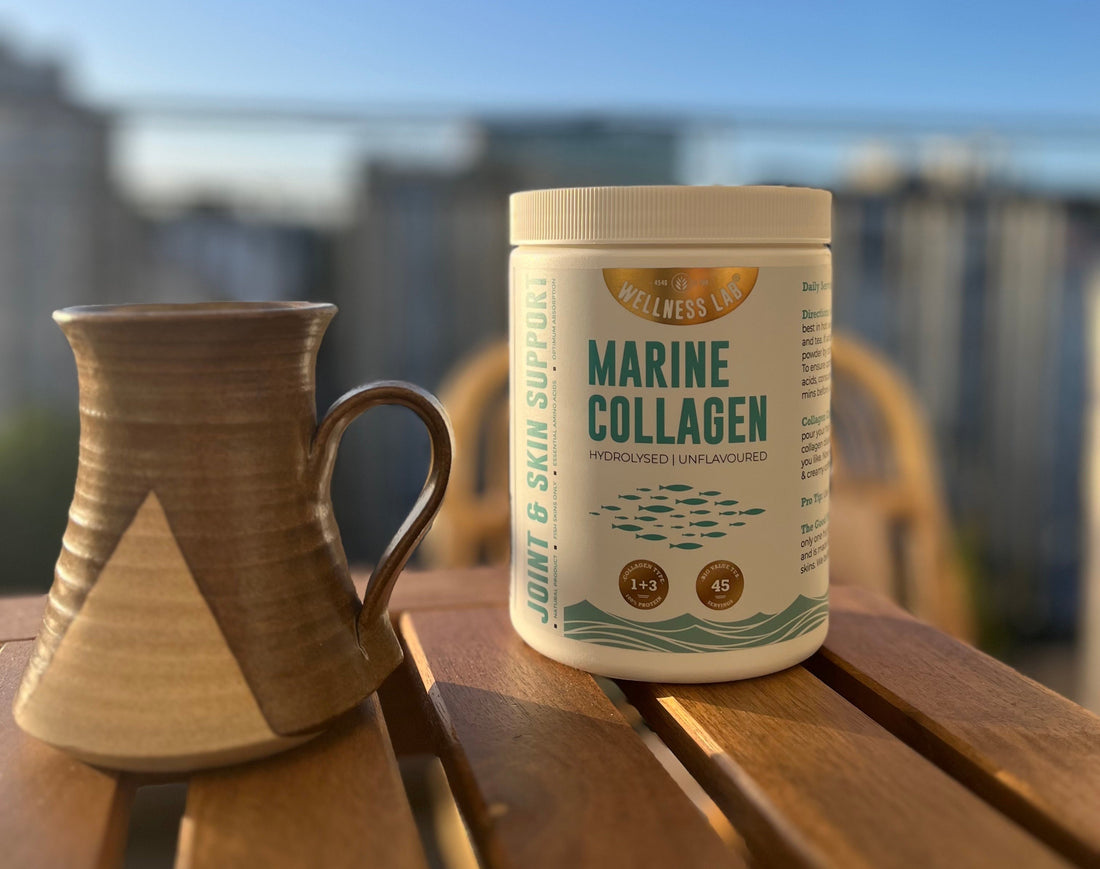
Why Choose Marine Collagen? Scientific Insights on Consumption vs. Topical Use
Share

Marine collagen is extracted sustainably from fish by-products—skins, scales, bones, and cartilage—minimising waste and environmental impact through circular bio- economy principles. This up-cycling not only supports eco-friendly manufacturing but provides a highly bioavailable source of collagen peptides.
Why consume marine collagen?
Hydrolysed marine collagen consists of small peptides and amino acids, optimised via enzymatic hydrolysis to enhance absorption through the digestive system. This systemic bioavailability enables these amino acids to reach fibroblasts—cells responsible for collagen synthesis in skin, joints, and connective tissues—thereby stimulating endogenous collagen production. As we age, natural collagen synthesis declines, so supplementation supports skin elasticity, hydration, and joint maintenance from within.
Why topical collagen creams and serums fall short:
Collagen molecules are typically too large to penetrate the epidermal barrier intact. Scientific literature confirms that topical application delivers collagen primarily to the skin’s surface, where it acts as a moisturiser but does not enter deeper layers to stimulate new collagen synthesis. Collagen synthesis is an intracellular, multi-step process requiring bioavailable amino acid precursors delivered systemically. Therefore, topical products cannot replicate the regenerative effects achievable by oral collagen peptides.
Marine collagen thus stands at the nexus of sustainability, bioavailability, and clinical efficacy—offering tangible benefits for skin and joint health supported by biochemical mechanisms and environmental stewardship.

